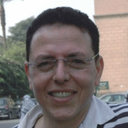The traditional medical uses and cytotoxic activities of sixty-one Egyptian plants: discovery of an active cardiac glycoside from Urginea maritima.
Sleutelwoorden
Abstract
BACKGROUND
Medicinal plants from the Sinai desert are widely used in traditional Bedouin medicine to treat a range of conditions including, cancers, and may thus be useful sources of novel anti-tumor compounds. Information on plants used in this way was obtained through collaboration with Bedouin herbalists.
OBJECTIVE
To document the traditional uses of 61 species from 29 families of Egyptian medicinal plants and to investigate their biological activity using a cytotoxicity assay.
METHODS
MeOH extracts of the 61 plant species investigated were dissolved in 10% DMSO and their cytotoxic activity was evaluated. The extracts were tested in duplicate on three separate occasions at three different concentrations (1, 10 and 100μg/ml) against human lymphoma U-937 GTB. The most active extract was subjected to bioassay-guided fractionation using HPLC and LC/ESI-MS to isolate and identify its active components.
CONCLUSIONS
The most potent extracts were those from Asclepias sinaica, Urginea maritima, Nerium oleander and Catharanthus roseus, followed by those from Cichorium endivia, Pulicaria undulate and Melia azedarach. Literature reports indicate that several of these plants produce cardiac glycosides. Bioassay-guided fractionation of alcoholic U. maritima extracts led to the isolation of a bioactive bufadienolide that was subsequently shown to be proscillaridin A, as determined by 1D and 2D NMR spectroscopy. This result demonstrates the value of plants used in traditional medicine as sources of medicinally interesting cytotoxic compounds.



